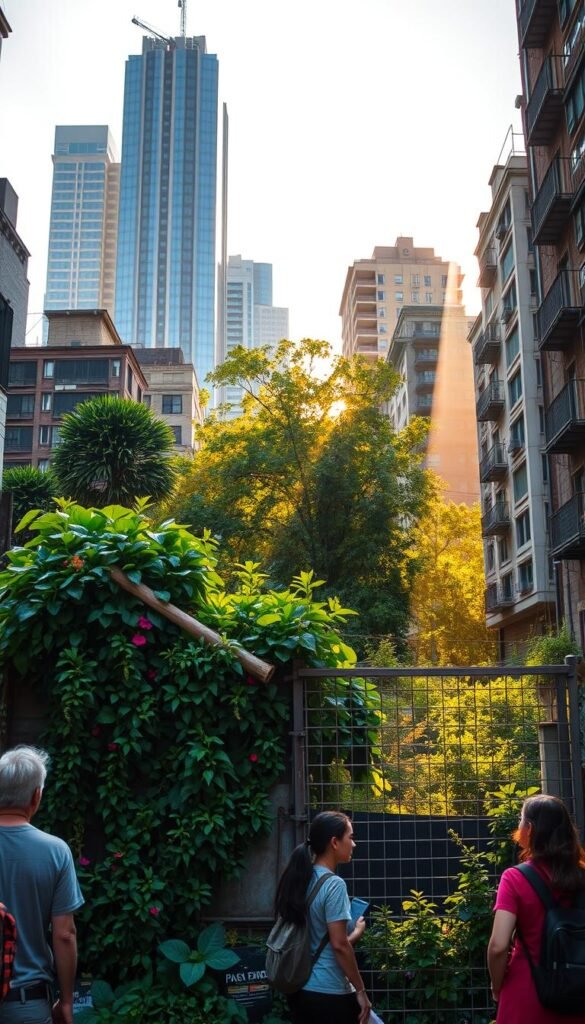Ever walk through a neighborhood filled with cracked concrete and forgotten spaces? Urban areas often lack natural beauty, but there’s a creative way to reclaim these spots. Imagine turning empty lots into thriving gardens—no permission slips required.
This movement blends environmental passion with hands-on growing techniques. By planting flowers, herbs, or veggies in overlooked areas, you boost local biodiversity and clean the air. Plus, these green pockets become gathering spots that strengthen community bonds.
Our guide simplifies everything from choosing hardy plants to prepping stubborn soil. You’ll learn how to pick the right seeds, work with limited resources, and navigate local regulations. We’ve even included a free 28-day challenge to kickstart your journey—complete with real success stories for motivation.
Ready to dig in? Let’s explore how small actions can grow into lush, vibrant landscapes that inspire neighborhoods. Your shovel (or trowel) is about to become a tool for change.
Understanding the Essence of Guerrilla Gardening
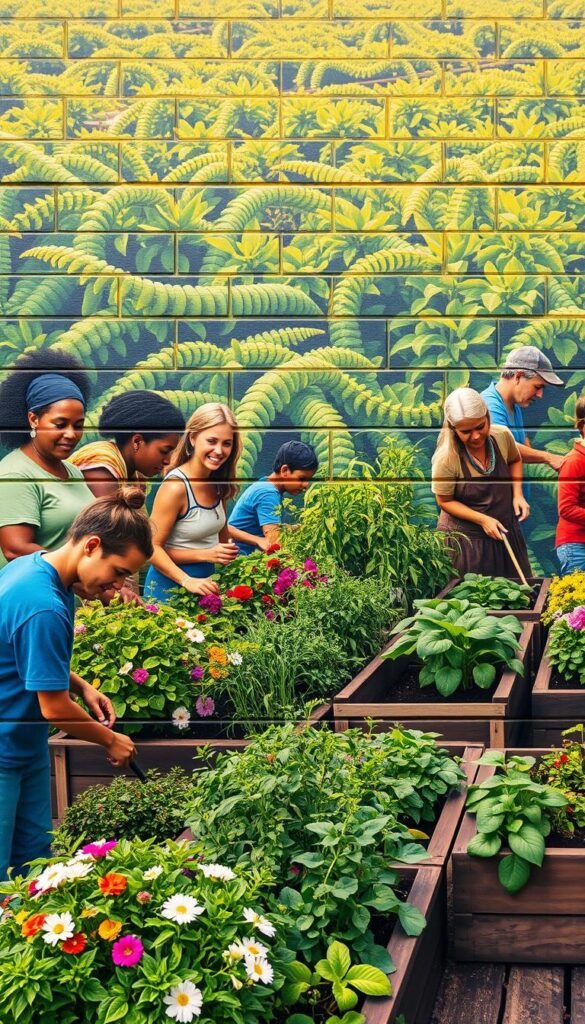
Urban decay meets its match when nature takes root unexpectedly. Guerrilla gardening isn’t just about planting flowers—it’s a bold statement against neglected spaces. By transforming empty corners into green sanctuaries, participants blend creativity with environmental care.
What Is Guerrilla Gardening?
It’s the act of cultivating land without official approval, often in overlooked urban areas. Think of it as a mix of gardening skill and peaceful protest. Enthusiasts might toss seed bombs over fences or sow wildflowers in cracked sidewalks, reviving spots that others ignore.
Core Values and Benefits
The movement thrives on four pillars: beauty, biodiversity, food access, and activism. Colorful blooms replace concrete, while native plants support local wildlife. Some groups grow veggies to address food deserts, proving that small actions can spark big change.
These green spaces also clean the air and bring neighbors together. A study by Urban Greening Research found that community-led gardens increase social connections by 40%. Want to join? Our free guide shares tips for starting your own grassroots green project—no experience needed!
The History and Evolution of Urban Green Movements
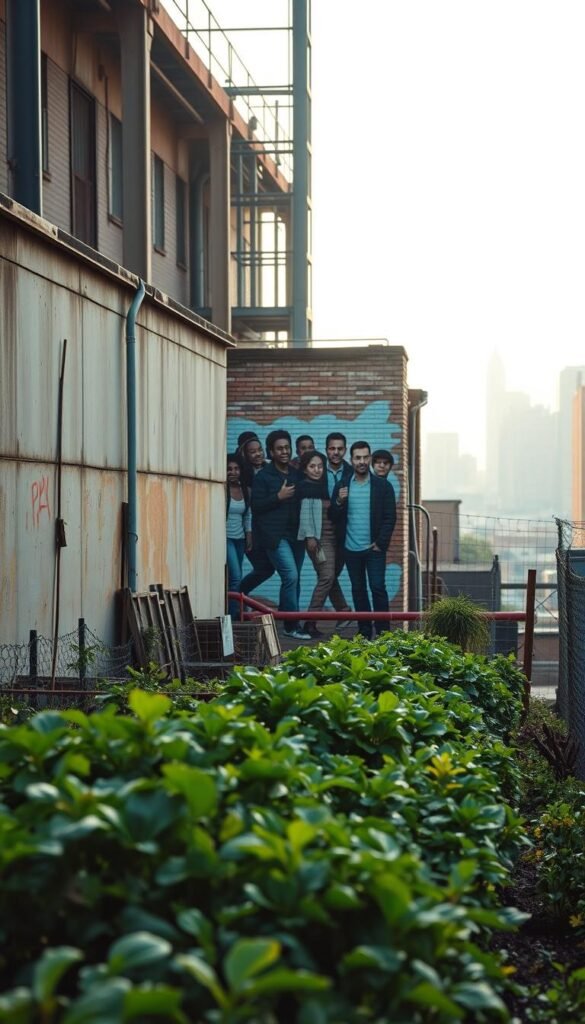
Long before skyscrapers dominated cityscapes, people found ways to weave nature into urban life. Ancient Roman courtyards and medieval monastery herb gardens laid early groundwork. These efforts quietly shaped how cities balance growth with green space—a tension still relevant today.
From New York City to Global Inspirations
Everything changed in 1973 when New Yorkers like Liz Christy took action. Her group, the Green Guerrillas, threw “seed bombs” into vacant lots—a radical act that birthed modern community-driven greening. Their first garden on Bowery Street became a blueprint for turning rubble into refuge.
British activist Richard Reynolds later popularized these efforts worldwide through blogs and books. By 2004, his work inspired teams from London to São Paulo to reclaim neglected areas. What started as local projects grew into a planetary push for greener cities.
Key Historical Milestones
Early techniques were simple: scattering seeds or planting hardy flowers. Today’s methods include rainwater harvesting and vertical farms. Legal boundaries also shifted—many cities now offer permission for approved plots, blending rebellion with cooperation.
Did you know? Over 50% of urban gardens now partner with local governments. This evolution proves that grassroots passion can reshape policies—and concrete jungles—into thriving ecosystems.
Guerrilla Gardening Projects: Spreading Greenery in Abandoned Lots
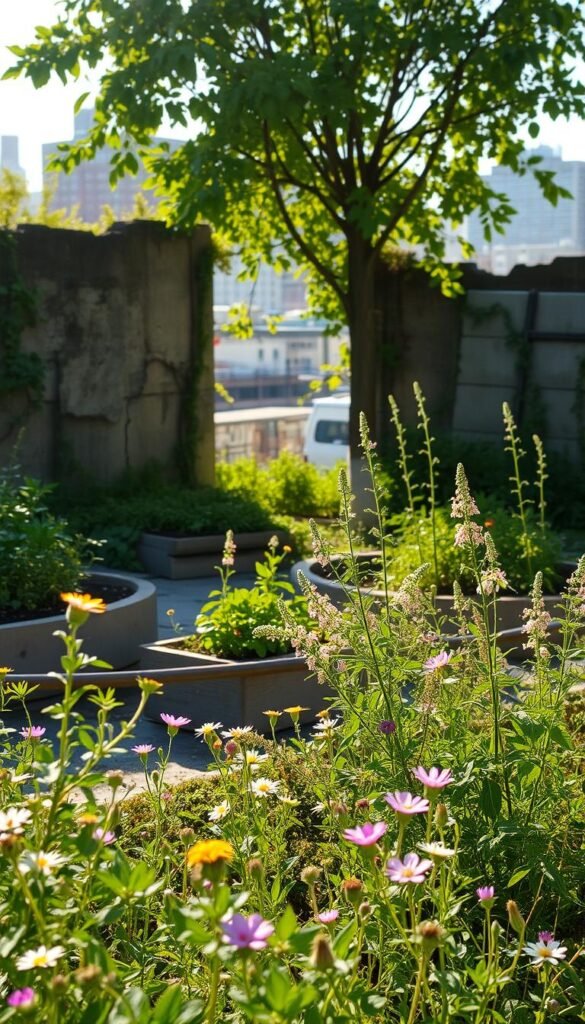
In the heart of urban decay, colorful transformations are taking root. Neglected lots become living laboratories where native plants reclaim cracked soil. These spontaneous gardens often start with simple acts—tossing seed-packed clay balls over fences or scattering wildflower mixes along forgotten roadsides.
Take Detroit’s urban farms as inspiration. Volunteers turned 1,400 vacant parcels into food-producing plots, boosting local air quality by filtering pollutants. Studies show such green spaces reduce particulate matter by up to 24%—a breath of fresh air for nearby residents.
What sets these efforts apart? Guerrilla gardeners prioritize resilience over perfection. They choose drought-tolerant species like coneflowers and milkweed, ensuring survival without constant care. Projects often blend practicality with artistry—think sunflower mazes in empty parking lots or herb spirals near bus stops.
Your turn: Find a patch begging for life. Pack seeds into biodegradable paper or nutrient-rich soil balls. Return weeks later to witness how small actions rewrite urban narratives—one bloom at a time.
Planning Your Urban Green Transformation
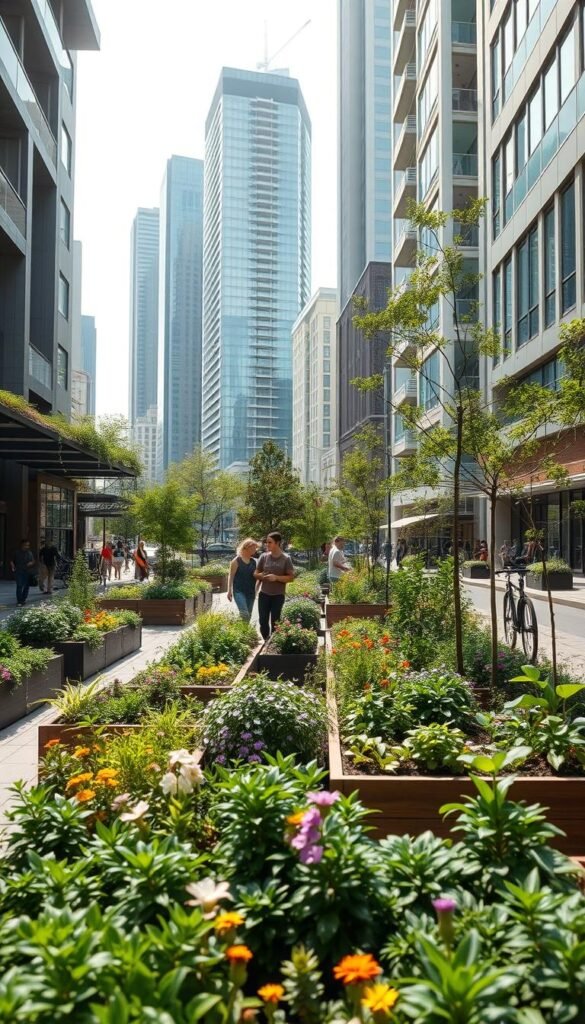
Ever noticed a forgotten corner in your city that could use a splash of green? Transforming neglected spaces starts with smart planning. Let’s break down how to turn overlooked areas into thriving pockets of life—one thoughtful step at a time.
Scouting and Selecting Abandoned Spaces
Start by exploring your neighborhood. Look for vacant lots with cracked soil, empty tree pits, or rusty planters. These spots often have untapped potential. Check if the location gets 4-6 hours of sunlight daily—most plants need this to thrive.
Ask locals about the site’s history. A chat with neighbors might reveal water access points or safety concerns. Pro tip: Small spaces like tree pits are perfect for beginners. They’re visible, manageable, and make an immediate impact.
Assessing Site Conditions and Goals
Test the soil by scooping a handful. Does it crumble or clump? Sandy soil drains fast but needs compost. Clay holds water but requires aeration. For urban farming, prioritize spots with decent dirt and sunlight for veggies like kale or tomatoes.
Define your purpose early. Want to grow food? Beautify a bleak block? Or create a gathering space? Clear goals help pick the right seeds and design. Use free urban green spaces guides to match plants with local conditions.
Finally, map out maintenance. Who’ll water during dry spells? Could neighbors join? Planning for care ensures your green haven lasts seasons—not just weeks.
Choosing the Right Plants and Eco-Friendly Techniques

Urban concrete jungles need tough love from nature’s survivors. Picking plants that thrive in harsh conditions ensures your green efforts last. Let’s explore how to match flora to your environment while keeping methods earth-friendly.
Selecting Native and Resilient Species
Start by choosing native species adapted to your area’s climate. These plants evolved to handle local droughts, pests, and soil types. For example, purple coneflowers survive dry spells, while milkweed feeds pollinators.
Avoid invasive varieties that crowd out local ecosystems. Check your state’s noxious weed list before planting. Experts like Ellen Mills suggest prioritizing perennials—they regrow yearly with minimal care.
Crafting Seed Bombs and Direct Sowing Tips
Mix 5 parts clay, 3 parts compost, and 1 part seeds to create seed bombs. Roll into marble-sized balls and let them dry. Toss these into hard-to-reach spots—they’ll sprout after rain breaks the clay shell.
For direct sowing, scratch the soil surface with a stick. Scatter drought-tolerant species like poppies or clover. Press seeds gently into dirt and water lightly. These methods reduce runoff and protect soil health.
Remember: guerrilla gardening works best when you mimic nature’s resilience. Pair smart plant choices with low-impact techniques to create lasting green spaces.
Essential Tools and Resources for Your Green Mission
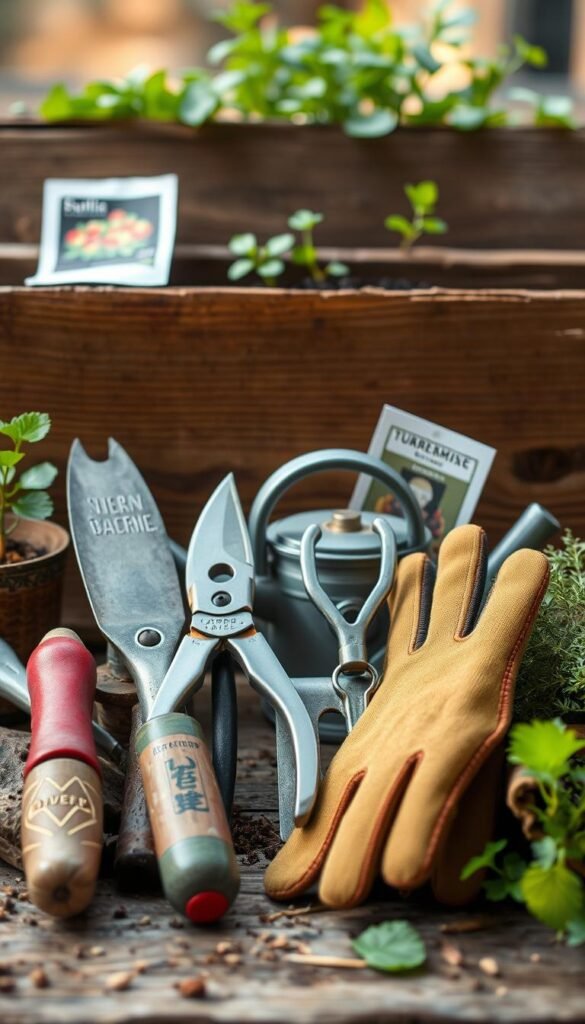
Ready to turn empty spaces into thriving green spots? Success starts with smart preparation. Whether you’re planting sunflowers in a vacant lot or herbs near a bus stop, the right tools and connections make your efforts last.
Building Your Portable Gardening Kit
Pack light but think big. Your kit should fit in a backpack while handling urban challenges. Here’s what you’ll need:
| Tool | Purpose | Budget Tip |
|---|---|---|
| Folding Trowel | Digging & soil prep | Check thrift stores |
| Puncture-Resistant Gloves | Protection from debris | Reuse old work gloves |
| Seed Bombs | Quick planting | Make your own with clay |
Source seeds from local plant swaps or sustainable gardening groups. Native wildflower mixes often thrive better than store-bought varieties.
Utilizing Online Guides and Community Networks
Knowledge is your secret weapon. Websites like GuerrillaGardening.org offer free planting calendars and soil tips. Join local community gardening groups on Facebook to share progress and get advice.
Social media helps amplify your impact. Post before-and-after photos using hashtags like #SeedBombSquad. Many cities have underground networks that share tools and resources—ask at farmers’ markets or libraries.
Remember: every dandelion pushing through concrete started with someone’s effort. Your tools and connections turn small actions into lasting change.
Navigating Legal and Ethical Considerations
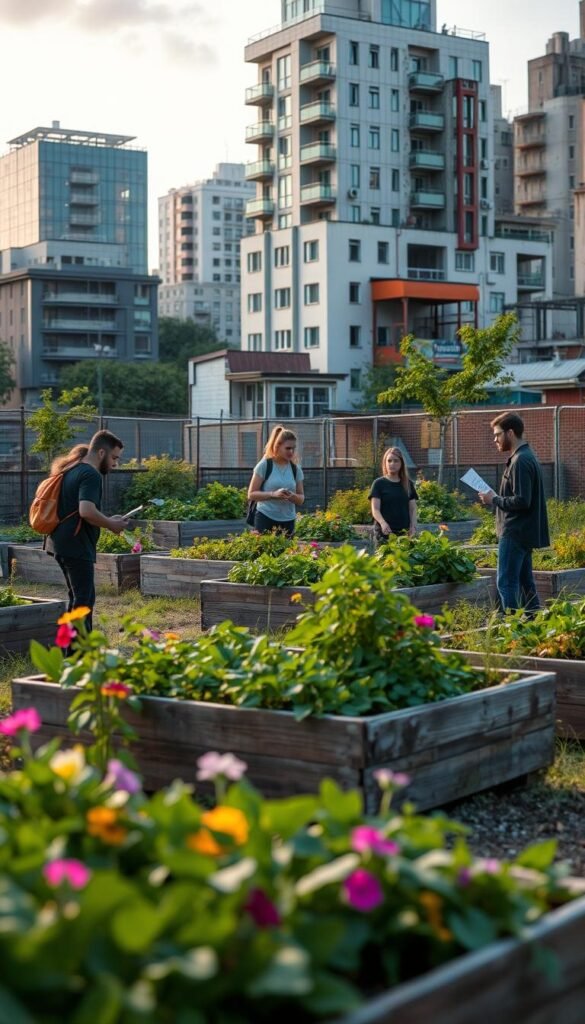
What happens when good intentions meet property lines? Transforming public spaces requires balancing creativity with respect for local rules. While revitalizing neglected public areas brings life to communities, understanding boundaries ensures your efforts thrive without unintended consequences.
Know the Ground Rules
In New York City, planting on vacant lots without permission could mean trespassing charges. Some cities classify unauthorized digging as vandalism. Always check municipal codes—many require permits for altering spaces, even abandoned ones. For example, York City fines up to $500 for unauthorized landscaping in certain zones.
Community First, Always
Start conversations with neighbors before transforming shared areas. A Chicago group gained support by sketching plans on community boards first. Use native plants to avoid ecological harm, and clean up debris to maintain safety. Projects thrive when they’re seen as gifts, not intrusions.
Document your work discreetly. Share progress photos without revealing exact locations to protect your project. If questioned, emphasize your goal: reviving public spaces for everyone’s benefit. Many cities now offer “adopt-a-lot” programs—a legal path to brighten the world around you.
Inspiring Stories and Global Successes in Guerrilla Gardening
From bustling metropolises to quiet neighborhoods, ordinary citizens are rewriting urban landscapes. These efforts prove that anyone can spark change—no fancy tools or budgets required. Let’s explore how grassroots movements are turning concrete into canvases for nature’s artistry.
Innovative Projects from Around the World
In Los Angeles, Ron Finley’s “Gangsta Garden” transformed curbside strips into food forests. His team grew okra and sweet potatoes in South Central, tackling food deserts head-on. Over 20,000 residents now access fresh produce from these once-barren patches.
Berlin’s Prinzessinnengarten turned a WWII bomb site into a thriving community garden. Volunteers used recycled materials to build raised beds, improving local air quality by 18% within three years. Tokyo’s underground “seed train” project saw commuters drop native wildflower seeds along railway lines, creating unexpected blooms across the city.
Real-Life Testimonials and Transformations
“We turned an old parking lot into a sunflower maze,” shares Sydney resident Clara M. “Now kids play there instead of avoiding it.” Her team’s efforts reduced summer heat in the area by 6°F, proving small projects make big impacts.
London’s “Edible Bus Stop” initiative transformed neglected transit areas into herb gardens. One participant noted, “Strangers started chatting while picking thyme—it rebuilt our community’s fabric.” These stories show how urban spaces become bridges between people and the planet.
Ready to add your chapter to this global movement? Your trowel—and vision—could be the next catalyst for change.
Wrapping Up Your Guerrilla Gardening Journey
Your neighborhood’s forgotten corners hold untapped potential for vibrant life. By reclaiming neglected spaces, you join a grassroots movement that revitalizes ecosystems and strengthens bonds between neighbors. From selecting native seeds to avoiding invasive species, every choice matters.
Start small—even a single tree pit bursting with native flowers makes a difference. Remember the steps: scout locations wisely, prep soil sustainably, and engage your community. Cities like Detroit and Berlin prove these efforts clean air, boost food access, and turn bleak zones into gathering spots.
Grab your trowel and those clay seed balls. Share progress photos using #GreenRevolutionaries to inspire others. Whether you’re planting herbs near bus stops or sunflower mazes in parking lots, your actions ripple outward. Together, we rewrite urban landscapes—one resilient plant at a time.

